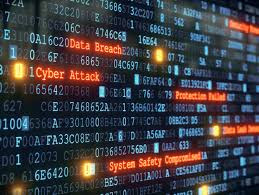In his previous lecture (noted with a link to YouTube here) Rabbi Kenigsberg asked whether halachah was equipped to cope with the challenges posed by a modern Jewish state? His answer was an emphatic “yes!”, because the very existence of the State of Israel provides a live factual context that enables us to express the halachah more clearly. He then related this conclusion to the position taken by Rav Moshe-Tzvi Neria in his debates with Yeshaya Leibowitz that it is fundamental to our Jewish belief that the Torah has a divine source of Torah, being applicable in all places and at all times.
In this lecture Rabbi Kenigsberg expanded on the need to the
State to provide greater factual detail in order to apply halachah with greater
precision, in particular with regard to hilchot Shabbat, where it is so
important to distinguish routine factual scenarios from emergencies. He also
raised the question as to what sources are most appropriate for resolving
she’elot on issues of national security. While Israel was an autonomous state
in the era of Tanach, Rabbi Asher Weiss has observed that one cannot pull
halachot straight out of the Tanach because its contents are not presented to
us in a structured manner in which we are made aware of relevant surrounding
circumstances. We also do not know whether applications of halachah in Tanach
reflect normal circumstances of states of emergency.
Rabbi Kenigsberg then referred to Rav Kook’s writings on the halachot of war in his Mishpat Kohen. In that work of war he discusses issues of pikuach nefesh (saving life) within the context of the war that is not mandated by Torah law—Milchemet reshut – and whether it can be allowed when it endangers lives. We see that wars of that nature were fought for the State’s economic benefit. However, laws relating to the collective (i.e. the State) are not found within Shulchan Aruch, this being a code that deals with the yachid, the individual, not the State. Seridim (remnants) of State halachah do still exist within Tanach: it is for us to trawl through Tanach for these seridim and seek to reconstitute them.
By way of a practical phenomenon that did not exist in bygone times and which is a matter of State responsibility, Rabbi Kenigsberg focused at length on the problems of cyber-defence on Shabbat. Cyber-attacks might be of obvious threat to life, such as those designed to contaminate the water supply, or they might pose risks for one of more individuals, as in the case of data capture that would enable foreign governments to identify Israeli soldiers on active service and arrest them for war crimes if they visited those countries. The rabbi discussed the applicability to these scenarios of the long-established halachot relating to extinguishing a fire on Shabbat as well as the principles that govern self-protection on the part of cities on Israel’s borders.
From what Rabbi Kenigsberg told his audience, it appears
that there are two general principles that can be invoked when weighing up
whether to allow a breach of Shabbat prohibitions. The first is that, even if a
threat or danger is initially very small, one must look ahead and calculate how
much greater might the damage be to the public and the State if it is not
immediately abated. The second is that, if action is not taken to defend oneself
even against an apparently small loss, an enemy will learn to attack the State
on Shabbat on the basis that there will be no response or retaliation by those
who are Shabbat-observant.
This note cannot really do justice to Rabbi Kenigsberg’s presentation, which was replete with references and citations and came with printed source materials—but you can listen to it in full on YouTube here.




















